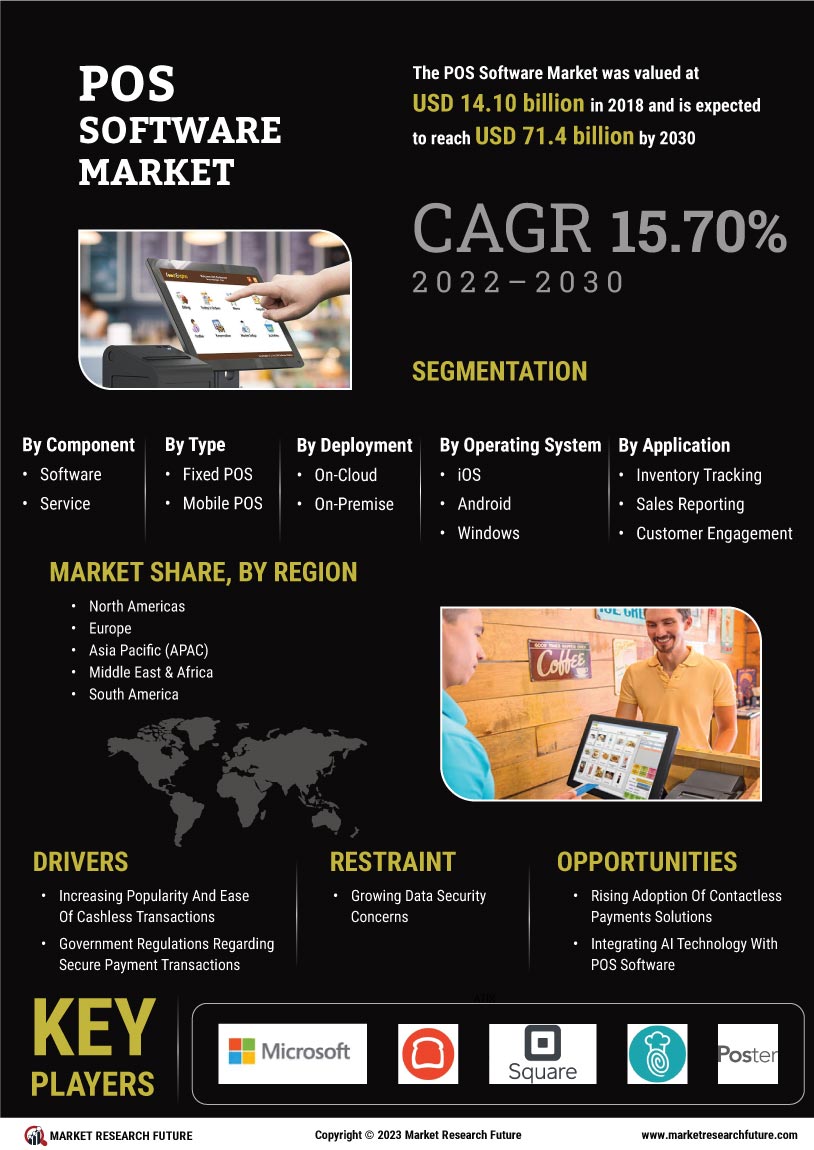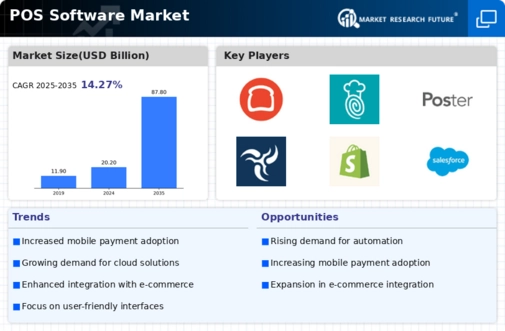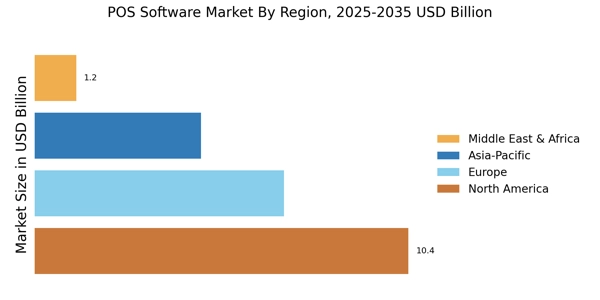Shift Towards Omnichannel Retailing
The POS Software Market is witnessing a shift towards omnichannel retailing, which is reshaping how businesses interact with customers. As consumers increasingly engage with brands across multiple channels, the need for integrated POS systems that can provide a seamless shopping experience is becoming paramount. This trend is supported by data indicating that businesses with omnichannel strategies retain an average of 89% of their customers, compared to 33% for those with weak omnichannel strategies. Consequently, retailers are investing in POS solutions that facilitate real-time inventory management and customer data integration across various platforms. This shift not only enhances customer satisfaction but also drives sales, making it a crucial driver in the POS Software Market.
Rising Demand for Contactless Payments
The POS Software Market is experiencing a notable surge in demand for contactless payment solutions. As consumers increasingly prefer the convenience and speed of contactless transactions, businesses are compelled to adapt their payment systems accordingly. This shift is evidenced by a significant increase in contactless payment transactions, which are projected to account for over 30% of total payment transactions by 2025. Consequently, POS software providers are enhancing their offerings to include advanced contactless payment capabilities, thereby driving growth in the industry. The integration of Near Field Communication (NFC) technology into POS systems is becoming a standard feature, allowing merchants to cater to evolving consumer preferences. This trend not only enhances customer satisfaction but also streamlines the checkout process, making it a critical driver in the POS Software Market.
Growth of Retail and Hospitality Sectors
The POS Software Market is significantly influenced by the expansion of the retail and hospitality sectors. As these industries continue to grow, the demand for efficient and reliable POS systems is expected to rise correspondingly. Recent data indicates that the retail sector alone is projected to reach a market size of over 5 trillion dollars by 2025, necessitating advanced POS solutions to manage transactions effectively. In the hospitality sector, the need for integrated POS systems that can handle reservations, orders, and payments seamlessly is becoming increasingly apparent. This growth is prompting businesses to invest in sophisticated POS software that can enhance operational efficiency and improve customer experiences. As a result, the POS Software Market is poised for substantial growth, driven by the evolving needs of these key sectors.
Regulatory Compliance and Data Protection
The POS Software Market is also driven by the increasing emphasis on regulatory compliance and data protection. With the rise in data breaches and cyber threats, businesses are under pressure to ensure that their POS systems comply with stringent security standards. Regulations such as the Payment Card Industry Data Security Standard (PCI DSS) mandate that businesses implement robust security measures to protect customer data. As a result, POS software providers are focusing on developing solutions that not only meet these compliance requirements but also enhance overall data security. This focus on regulatory compliance is likely to drive demand for advanced POS systems that offer integrated security features, thereby contributing to the growth of the POS Software Market.
Technological Advancements in POS Systems
Technological advancements are playing a pivotal role in shaping the POS Software Market. Innovations such as artificial intelligence, machine learning, and big data analytics are being integrated into POS systems, enabling businesses to gain valuable insights into customer behavior and sales trends. These technologies allow for more personalized customer experiences and improved inventory management, which are essential for maintaining competitiveness in the market. Furthermore, the introduction of mobile POS systems is transforming traditional retail environments, allowing for greater flexibility and efficiency. As businesses increasingly recognize the value of these technological enhancements, investment in advanced POS software is likely to escalate, further propelling the growth of the POS Software Market.


















Leave a Comment